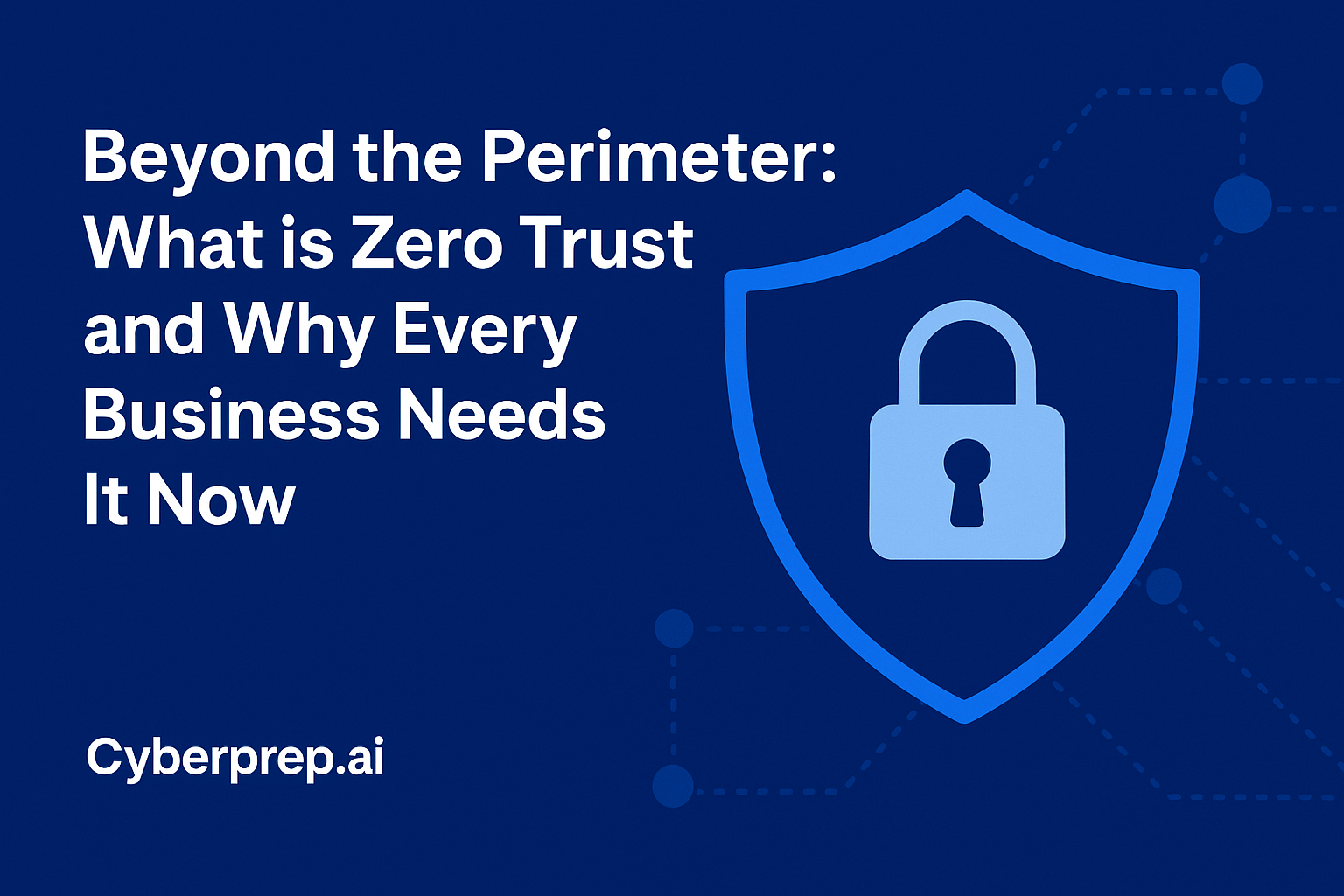Welcome back to the Cyberprep.ai blog. For decades, cybersecurity was largely built around a simple concept: the perimeter. You protected your network like a castle, assuming everything inside was safe and everything outside was a threat. In 2025, with remote work, cloud services, and complex supply chains, that castle has no walls.
This traditional model is dangerously outdated. Today’s reality demands a fundamentally different approach, and that approach is Zero Trust. At Cyberprep.ai, we see Zero Trust not just as a technology, but as a critical philosophy for building a resilient Preparedness Framework in an interconnected world.
The Problem with Trust: Why “Trust, But Verify” Is No Longer Enough
The traditional “castle-and-moat” security model operated on implicit trust. Once a user or device was inside the network, it was largely trusted. But what happens when:
- An attacker compromises a legitimate user’s credentials?
- A malicious insider gains access?
- A trusted third-party vendor’s system is breached?
- An employee brings an infected personal device into the network?
In these scenarios, the “trusted” perimeter becomes a single point of failure. Attackers, once inside, can move laterally with ease, escalating privileges and accessing sensitive data undetected.
Zero Trust: The “Never Trust, Always Verify” Philosophy
Zero Trust flips the traditional model on its head. Its core principle is simple: Never trust, always verify.
This means:
- Verify Every User and Device: No user, device, or application is inherently trusted, whether they are inside or outside the network. Every access request is rigorously authenticated and authorized.
- Least Privilege Access: Users are only granted the minimum level of access required to perform their specific job functions, and this access is continually re-evaluated.
- Micro-segmentation: Networks are divided into small, isolated segments. This limits an attacker’s ability to move laterally, confining them to a small area if a breach occurs.
- Continuous Monitoring: All network traffic and user behavior are constantly monitored for anomalies, and security postures are continuously assessed.
- Contextual Policies: Access decisions are dynamic, based on multiple factors like user identity, device health, location, data sensitivity, and the application being accessed.
Think of it not as a single gate, but as a series of individualized, constantly checked checkpoints before every single door within your organization.
Why Zero Trust is Non-Negotiable in 2025
The shift to Zero Trust is not just a trend; it’s a strategic imperative for global businesses:
- Remote Work Security: With distributed workforces accessing resources from anywhere, Zero Trust ensures every connection is verified, enhancing security beyond the corporate office.
- Cloud Adoption: As organizations increasingly leverage multi-cloud environments, Zero Trust provides consistent security policies across disparate infrastructures.
- Supply Chain Risk: It helps mitigate the risk introduced by third-party vendors and partners by enforcing strict access controls and continuous verification.
- Insider Threat Mitigation: By limiting access and continuously monitoring, Zero Trust dramatically reduces the damage an insider threat can cause.
Building Your Zero Trust Strategy with Cyberprep.ai
Implementing a Zero Trust architecture is a journey, not a destination. It requires a fundamental shift in mindset and a strategic, phased approach to technology and policy.
This is precisely where Cyberprep.ai excels. Our training programs are designed to demystify Zero Trust, providing your IT and security teams and indeed, your entire organization with the knowledge, best practices, and actionable strategies needed to plan, implement, and maintain a robust Zero Trust model. We empower you to build a security posture that expects breaches and is therefore prepared to contain them at every turn.
Don’t let outdated security assumptions leave your business vulnerable. Embrace the future of cybersecurity with a Zero Trust approach.
Visit cyberprep.ai to discover how our expert-led training can guide your organization toward a resilient, Zero Trust future.

